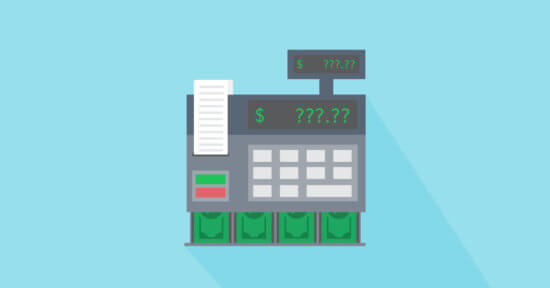Whether you’re planning to bill by the hour, with set rates, or through contingency arrangements, you need to know what your time is worth.
Knowing how to set attorney fees is about more than just aligning with what you think the market will bear, or how much you’d like to be making. It’s about understanding the goals of your business.
Here, we’ll look at factors that should go into planning your firm’s goals, as well as how to calculate a lawyer’s hourly rate or attorney fees that can be justified by those targets.
What should my hourly rate be?
If you’re starting a new law firm or leaving Big Law to strike out on your own, how do you know how much to charge or what your fees should be? You can ask other lawyers about pricing at networking events or over dinner, but those answers will be anecdotal at best, or completely inaccurate at their worst.
Looking at data-driven sources like the billable hour index from Clio’s annual Legal Trends Report will help you position yourself more confidently.
For example, if you’re a family lawyer, and you want to charge clients a premium fee based on your extensive experience, you can know definitively that the average rate is $202 per hour, and make your decision based on that number.
Furthermore, real hourly billing rates help dispel the myth that lawyers charge too much. The average hourly billing rate for D.C. lawyers is high, but with a high cost of living for the state, those attorney fees are warranted.
Check out our Legal Rates Calculator to help ensure you’re staying competitive in your area:
I practice in several areas—should I charge different hourly rates?
Potentially. The average legal billing rate for some practice areas is much higher than for others. It might make sense to charge more based on the area of law you practice in. For example, the average hourly rate for a lawyer specializing in immigration law is much higher than the average rate for a lawyer working in family law.
Of course, you’ll need to consider whether your clients would be receptive to such a billing model. But, having data to explain why you’re charging different rates for each area of law practice might help explain where you’re coming from.
You may like these posts
Should I bill hourly or use flat fees?
That depends on your practice area. The billable hour is still the dominant model for many law firms, but some practice areas are moving towards alternative fee arrangements, such as flat pricing or contingency fees.
According to the Billable Hour Index, the majority of immigration and criminal lawyers charge clients based on a flat fee rather than billable hours. A not-insignificant proportion of wills and bankruptcy lawyers use flat fees as well.
If you’re practicing in those legal areas, it may be worth considering an alternative fee structure.
Know the value of legal service
According to Above The Law, rate pressure, or reluctance in relation to attorney fees from clients is a challenge for 21% of small firms. This is the number-two issue—behind acquiring new clients (27%) and ahead of spending too much time doing administrative tasks (15%).
Before you lower your hourly rate expectations, however, it’s important to recognize the scope of service, and value, that a lawyer provides. There is no doubt that lawyers earn more than people in other professions—and there’s a good reason for that.
No matter the practice area, a lawyer will take on people’s most worrying and pressing problems—and there are consequences if they fail to do their job to the best of their ability. It’s a significant obligation that demands a high degree of specialized knowledge, tact, and professional responsibility, especially when considering the repercussions of malpractice or intellectual property laws.
That said, it’s important to keep in mind the ABA Rules of Professional Conduct, which expect legal fees and pricing to be “reasonable.” Aside from attributing billable work to detailed time records, let’s now look at how to set some baseline expectations for what is reasonable for you and your firm.
How to calculate your hourly rate
Follow these steps to make sure you’re choosing a competitive and profitable hourly rate for yourself or your law firm.
1. Calculate your cost of doing business
Let’s say you’re a lawyer looking to take home $100,000 per year in salary and you’re expecting annual non-reimbursable business expenses of $30,000. If you’re looking to earn a profit margin of 40%, you’ll be looking to bring in another $52,000 (($100,000 + $30,000) x 40% = $52,000).
To calculate your annual cost of doing business, add these numbers together: $100,000 + $30,000 + 52,000 = $182,000. Next, we’ll divide this number by your planned number of billable hours for the year. Learn more about calculating your cost of doing business by reading about legal fee expenses.
2. Calculate your number of billable hours
Let’s say a given year has 260 weekdays (which can range from 259 to 262 days, given the year). With ten national holidays in the United States, that brings your total number of regular work days down to 250. If you plan to work eight-hour days, that leaves you with 2,000 potential billable hours.
Chances are, you’ll need to take some vacation time to avoid burnout, and it might be good to plan for a few sick days. Let’s factor in an additional three weeks, or 15 working days (120 hours), of being out of office, bringing our total office hours down to 1,880 (2,000 – 120 = 1,880).
Now, also consider that not all office time is billable. In fact, small-firm attorneys spend about 61% of their time doing billable work. For solo attorneys, this number is more like 55%. Say you plan to bill for 60% of your office time, that brings your number of billable hours to 1,128 (1,880 × 60% = 1,128).
In fact, Clio recently conducted a study that looked at aggregate and anonymized data, free of any self-reporting bias, that shows average billing rates could be as low as 29% for lawyers. Learn more about these results in the Legal Trends Report.
3. Put it all together
Once you’ve figured out and calculated the above, divide your cost to do business by the number of billable hours you expect for the year. In this case, it will be: $182,000 ÷ 1,128 = $161.35/hour.
Before making any judgment on whether this number seems high or low, let’s look at a few other factors that can affect your planning.
4. Compare market rates
Market rates can vary according to geography and specialization, and there might be room for you to bump your hourly rates up where your legal services are in high demand. Use a legal rates calculator to determine if your rates are competitive.
To get more information on market rates, read Clio’s Legal Trends Report. Information on average billable hourly rates can be difficult to find, but the Legal Trends Report draws on aggregated and anonymized data from 40,000 active Clio users to give lawyers reliable information on how their rates compare across states and practice areas. Compare your rates based on this data with the Legal Rates Benchmark Tool.
Beyond that, lawyers can look at employment data from the Bureau of Labor Statistics to get an idea of average salaries for lawyers across the country. As of May 2021, the mean annual wage for lawyers in the U.S. was $153,630.
Many state bar associations also post industry salary trends with breakdowns of law firm type and practice areas. It’s also a good idea to talk to colleagues or mentors for information and advice based on their experience in the market.
5. Make yourself more valuable
If your salary expectations seem low, know that there are ways to make your legal services more valuable to clients and earn yourself higher hourly fees.
You could do this by becoming more specialized and therefore improving the quality of your legal service. If you have a lot of experience as a lawyer, you may also be able to charge clients more. One of the greatest fee determiners is experience—where lawyers with 8–10 and 20+ years’ experience earn up to 100% more than new lawyers. Also, providing a better client experience may be worth a lot to some of your clients, depending on your practice area. This is one of the simplest ways to differentiate from the competition, and, in addition to increasing the value of your legal services, can lead to more reviews, referrals, and business down the line.
Consider the cost of doing business
What you bill isn’t just about what you get paid. Your legal fees also need to cover everything that keeps your doors open and your lights on.This is one of the benefits to running a leaner practice; less of what you earn goes to paying overhead—and there’s less of a barrier to getting your firm up and running.There are three components to estimating annual cost: salary, business expenses, and profit expectations.
1. Salary equivalent
Lawyers often make the mistake of simply subtracting money from their law firm accounts when a client pays their bill. A better method is to “pay” yourself a salary, i.e., a fixed monthly amount that leaves capital in the firm for lean months or can be used to invest back into the firm.Beyond running your practice, you need to make sure that your work salary covers your cost of living. Think deep: Include mortgage payments, car expenses, child care, vacations, taxes, and everything else that keeps you housed, clothed, and fed.
2. Business expenses (non-reimbursable)
When calculating your non-reimbursable business expenses, you’ll need to account for everything that keeps your office running, on an annual basis.These costs may include:
- Office space
- Software subscriptions
- An accountant
- Office equipment
- Furniture
- Utilities
- Postage and delivery fees
- Business insurance
- Bar memberships
- Medical insurance
- Travel expenses
- And more
3. Firm profits
While money earned is generally meant to go into your own pocket, it’s important to continually invest in your business, which means you’ll need to set aside money for the firm.Reported profit margins for AmLaw 200 firms average at 36.5% (with a median of 35%). Some firms reported profit margins as high as 60%. This is money that can then be invested in new marketing initiatives, new equipment, or professional development opportunities.Having funds on reserve in your firm will also help you weather any slow billing periods. It can also help offset any potential cash flow—or collections—issues throughout the year.
Interested in learning more about what else factors into setting your rates and fees? Read How Much Should Lawyers Charge? 7 Factors to Determine Your Hourly Rate.
Increase productivity, bill more hours—and track your targets
If you’re unhappy with your current hourly rates, another way to raise expectations for yourself is to look at ways to increase productivity and the number of hours you bill per day. Setting yourself up with the right law practice management software and finding ways to automate repetitive tasks can increase the time you devote to clients.Once you have a sense of what your time is worth, it’s important to set goals for your firm, so that you know when to adjust expectations—and when to celebrate. With Clio, you can set billing targets for your firm based on your default billing rate—and then track your earnings against these goals to each day, week, month, and year.
We published this blog post in June 2017. Last updated: .
Categorized in: Business
Get paid faster, save time, and reduce outstanding bills
Download our free e-book and learn the 7 easy steps to easier, more efficent billing
Get the e-book








